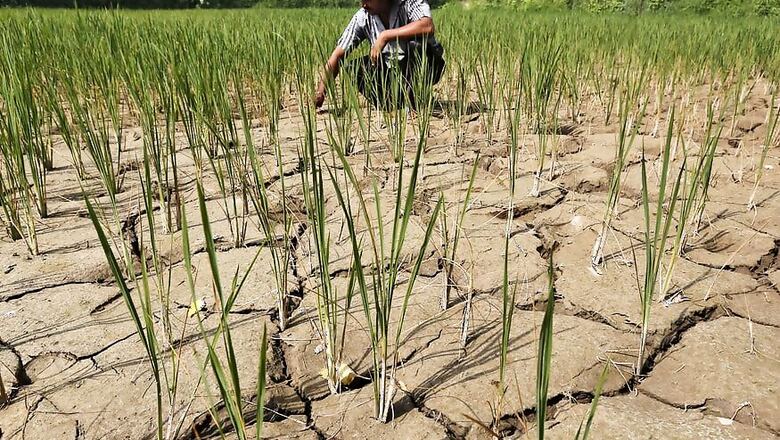
views
Chandigarh: Haryana is staring at a severe water crisis with the groundwater depleting at a rapid rate and completely drying up in some areas, leading to the alarming emergence of 12 ‘dark zones’.
According to an unpublished report by Central Ground Water Board (CGWB), accessed by News18, these dark zones have showed up across the state in the last five years.
The CGWB carries out an assessment of underground water level every five years in each state in collaboration with the state governments. The last such exercise in Haryana was carried out in 2013. As many as 119 blocks in 21 districts were assessed at the time, and 64 of the blocks were found to be ‘over-exploited’ or dark zones.
In 2017, the whole exercise was performed again in 22 districts (Charkhi Dadri was carved out in 2016) and it was revealed that 78 out of the 128 blocks in the state were ‘over-exploited’ — 12 more dark zones than in 2013.
Haryana chief hydrologist Rakesh Kumar told News 18 that Faridabad, Gurugram, Mahendragarh, Bhiwani, Dadri, Palwal, Mewat, Kurukshetra, Kaithal, Panipat and Sirsa districts are the worst-affected. The water level in these areas has been falling one metre every year, he added.
A zone is termed to be ‘over-exploited’ if the pumping out of the underground water exceeds 100 per cent. The underground water level has plunged by 20-60 metres in 19 of the 22 districts, with south Haryana and areas along the GT Road belt registering the sharpest falls.
However, three districts in the state have witnessed stable or increased groundwater level. Overabundance of canal waters and groundwater salinity has led to waterlogging in Rohtak, Sonepat and Jhajjar districts, and some blocks of Jind.
The depleting groundwater water level in Haryana can be mainly attributed to extensive paddy farming in the state. At the time of Haryana’s formation as a separate state, around 1.92 lakh hectares of land was under paddy cultivation, which went up to 14.22 lakh hectares last year — a seven-fold hike in 50 years.
An acre of paddy is required to be flooded around 26 times. Put simply, 5,389 litres of water are required for every kilogram of rice produced. Therefore, the state government has been making an appeal to the farmers for diversification to other crops.
The Haryana government has launched a pilot project encouraging farmers to go for pigeon peas (arhar) or maize cultivation, crops which require relatively lesser amounts of water. The state government has announced a subsidy for those who opt for crops other than paddy.
A cash incentive of Rs 2,000 per acre, besides a host of other benefits, has also been announced in seven blocks spread over seven districts across the state — Assandh (Karnal), Pundri (Kaithal), Nawana (Jind), Thanesar (Kurukshetra), Ambala-1 (Ambala), Radaur (Yamunanagar) and Gannaur (Sonepat). Efforts to recharge the groundwater level through ponds are ongoing, with the Haryana Pond Authority cleaning up water bodies in the state.
Taking cognizance of the increasing number of ‘dark zones’, the state government has also put on hold the new tube-well connections in the over-exploited zones. The state government has rejected more than 44,000 such applications, though the government is still providing tube-well connections for drip and micro irrigation in these areas.
Haryana’s total water requirement is 20 million acre feet (MAF). The state receives around 2.3 MAF water from the Yamuna River and Bhakra systems, while 12 MAF water is extracted using 8.47 lakh tube-wells and around the same number of diesel pumps. The state still faces a shortage of 5.7 MAF water annually.
(With inputs from Manoj Kumar)


















Comments
0 comment